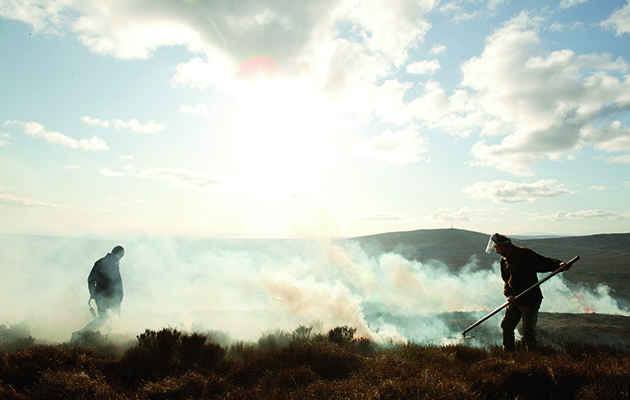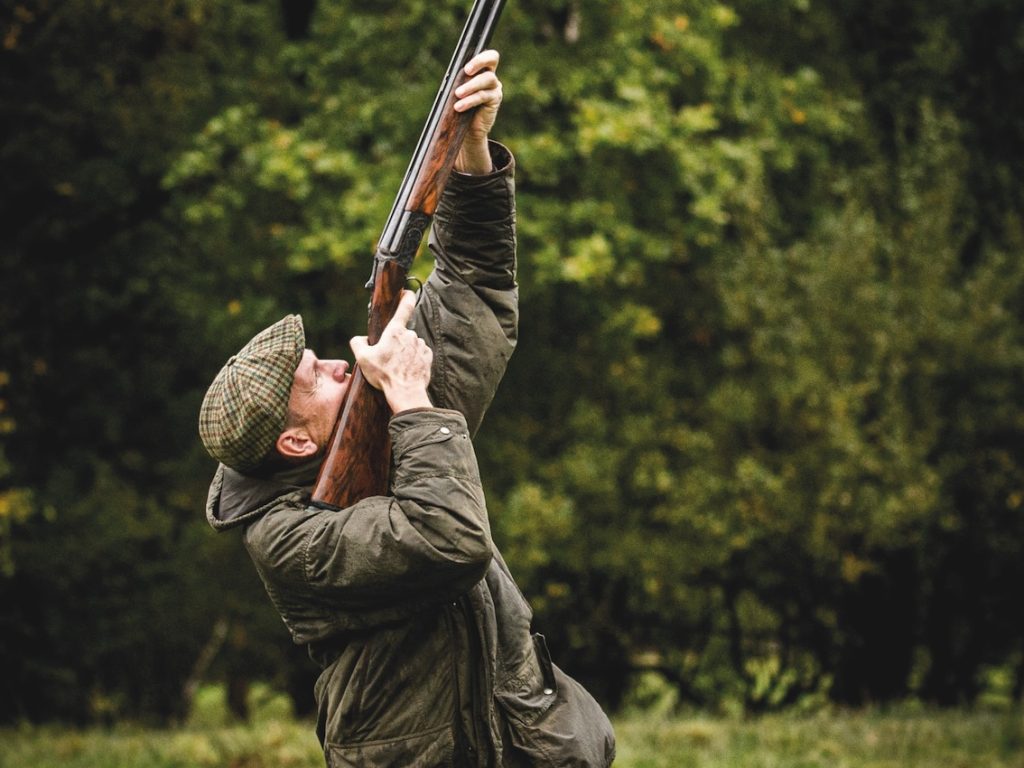Win CENS ProFlex DX5 earplugs worth £1,149 – enter here
“Muirburn could have prevented blaze on Howden Moor,” say keepers
 heather burning
USD 24 MAR 10 HEATH BURN
Usd 23 oct 13 ring ouzel
Usd 1 oct 14 nws 6
heather burning
USD 24 MAR 10 HEATH BURN
Usd 23 oct 13 ring ouzel
Usd 1 oct 14 nws 6
Gamekeepers and countryside groups have stressed the importance of muirburn as a conservation tool, following the fire that destroyed more than 200 acres of heather moorland on the National Trust-owned Howden Moor in the Peak District National Park earlier this month.
The fire was started by a disposable barbecue that was not properly extinguished and which quickly escalated into a severe blaze that threatened the habitats of animals including hen harriers, plover and red grouse. Due to the intense heat damage, it has been reported that the area could now be uninhabitable for years.
Speaking to the regional press, local gamekeeper Kieran Logan blamed National Trust moorland management policies for being partly to blame for the spread of the fire: “This is devastating. Two hundred acres of heather moorland, which is actually rarer than the rainforest, gone in an instant, all because we are not allowed to burn off patches like we used to.
“By burning selected areas annually and keeping the heather at different heights it used to create natural fire barriers. But we’re not allowed to do that anymore and now there are unbroken areas of heather, which is a huge source of energy for accidental fires.”
Muirburn benefits rare species
Hans Mckenzie Wilson, keeper and member of Grampian Moorland Group, commented that muirburn “benefits a whole host of rare species and helps ensure that accidental moor fires can be brought under control much quicker than we have seen in the last few days.”
Countryside Alliance chief executive Tim Bonner called the fire “a reminder of the considerable damage to wildlife and the environment that can result from careless behaviour, and tried and tested management practices being ignored by a few land managers.”
He further highlighted the work of gamekeepers to combat the blaze and protect the moorland: “After the fire services left at dusk with the fire still burning, it was the Peak District’s gamekeepers that remained overnight to keep the fire under control. Had they not done so then, according to one expert on the ground, some 8,000 acres of heather moorland could have been destroyed. It was those same gamekeepers who also managed to save a known hen harrier nesting site that had been used since 2003, from being destroyed by the fire.”
“Without gamekeepers we could have been look at an ecological disaster”
“The controlled, cool, burning of heather,creating firebreaks,and maintaining tracks to allow access onto moorland can all help in the prevention and control of wildfires, and they are common management practices that are carried out by responsible land managers, especially in areas where cutting of heather is an impossible alternative. While the damage might not have been prevented, it might certainly have been further contained had the tenant been allowed to do so on Howden Moor. One thing is certain, without the gamekeepers and privately owned specialist fire-fighting equipment, we could have been looking at nothing short of an ecological disaster.”
The Peak District fire came in the same week as soaring temperatures which led to blazes in Scotland. Firefighters and landowners worked to contain two fires near Tongue in Sutherland which spread over a region of 7 sq km.
Gamekeeper Ian Hepburn, member of Loch Ness Rural Communities group and a retained firefighter in Inverness- shire, commented: “Muirburn is a beneficial practice, for a variety of reasons, and there is no doubt controlled muirburn could have helped prevent the worst of what we have seen recently.
“Given the heat we’ve had, everything is so dry and, if the heather on the moors is not being managed by controlled burning and the creation of firebreaks, all it takes is a strong wind in the wrong direction and an accidental fire will just take off. It takes an awful lot to get it under control.
“These wildfires, like the one in England, will burn very deep into the peat, which is what you look to avoid with a controlled muirburn, because deep burning of peat releases carbon. The habitat will be a desert for several years. There are some with agendas who are critical of muirburn but it will be increasingly important in controlling wildfires in future.”
Related Articles
Get the latest news delivered direct to your door
Subscribe to Shooting Times & Country
Discover the ultimate companion for field sports enthusiasts with Shooting Times & Country Magazine, the UK’s leading weekly publication that has been at the forefront of shooting culture since 1882. Subscribers gain access to expert tips, comprehensive gear reviews, seasonal advice and a vibrant community of like-minded shooters.
Save on shop price when you subscribe with weekly issues featuring in-depth articles on gundog training, exclusive member offers and access to the digital back issue library. A Shooting Times & Country subscription is more than a magazine, don’t just read about the countryside; immerse yourself in its most authoritative and engaging publication.







